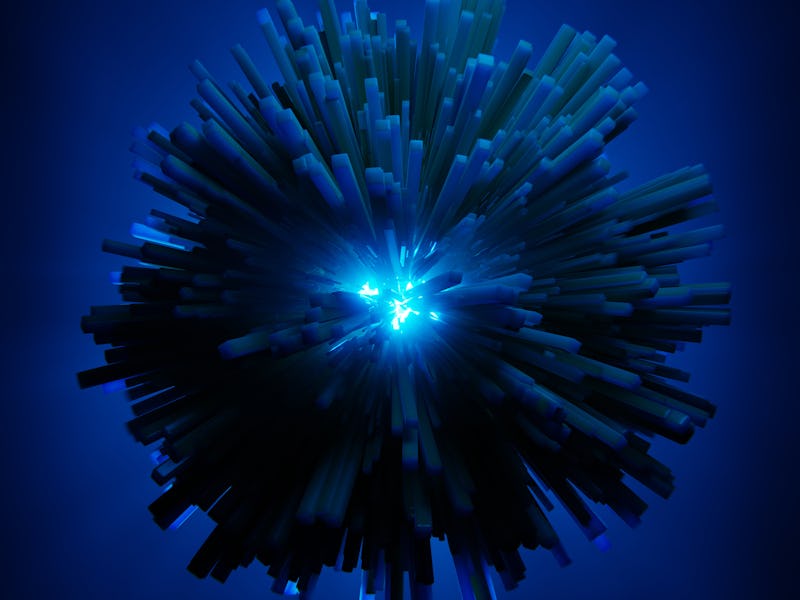Physicists achieve a "holy grail" of nuclear fusion — with a long road ahead
Don’t expect fusion to power your home anytime soon.

Last week, the Department of Energy’s Lawrence Livermore National Laboratory made nuclear fusion history. At 1 a.m. Pacific on December 5, scientists fired the world’s most energetic lasers to recreate the process that gives stars like the Sun their sparkle — turning hydrogen into helium.
For the first time in history, this attempt to recreate nature produced surplus energy. After putting in two megajoules of energy, the reactor spit out a bit over 3 MJ, according to today’s DOE press conference. This breakthrough is more than six decades in the making and brings us a step closer to an abundant new form of clean energy.
“We have taken the first tentative steps toward a clean energy source that could revolutionize the world,” said Jill Hruby, the Department of Energy’s under secretary for nuclear energy, during the press conference.
The National Ignition Facility houses a giant laser capable of sparking nuclear fusion.
What is fusion ignition?
At the Lawrence Livermore National Laboratory’s National Ignition Facility, a giant laser takes up a building the size of three football fields. The laser shoots a pulse that’s split into 192 beams and lands on an eraser-sized gold cylinder. That cylinder contains a frozen pellet of hydrogen isotopes deuterium and tritium.
When blasted with this pulse of energy, the capsule heats up to more than 3 million degrees Celsius and implodes. This causes the hydrogen atoms to fuse into helium and release high-energy neutrons, along with other forms of energy. But it’s easy to miss: All of this goes down in a fraction of a nanosecond.
The NIF laser target contains a capsule around two millimeters in diameter filled with super-cooled hydrogen fuel.
If conditions are just right, the laser blast sets off a self-sustaining fusion reaction — the energy from the fusion drives more fusion by heating the surrounding hydrogen atoms. When the process creates enough energy to equal or exceed the amount put in, it’s known as ignition.
On December 5, the team was able to release around 3.15 MJ of energy, around 54 percent more energy than they put in. This feat beats the previous record of 1.3 megajoules that was set in August 2021.
What is nuclear fusion?
The tokamak traps gas in magnetic fields while heating it up to the temperatures required for fusion.
The laser method is just one way to create fusion energy, which comes from the heat created by nuclear fusion reactions. This heat is released when two atoms of hydrogen collide to form one atom of helium and a neutron.
Scientists began looking into fusion around the 1950s and proposed a range of designs for reactors. Today, most mainstream approaches rely on powerful lasers, like those wielded at the National Ignition Facility, or machines that use magnetic fields to merge hydrogen atoms.
These include the tokamak, a donut-shaped device designed by Soviet physicists in the 1950s. This device traps gas in magnetic fields while heating it up to the temperatures required for fusion.
When can we get fusion energy?
The National Ignition Facility team emphasized that, while the recent feat is worth celebrating, we can’t expect large-scale fusion plants to power our homes anytime soon. For one, the device relies on technology from the 1980s and ‘90s and wasn’t created with commercial production in mind. It requires an enormous amount of energy — around 300 MJ — to shoot the laser and kick off the fusion process, and the laser can only run a few times a day.
"The laser wasn't designed to be efficient. The laser was designed to give us as much juice as possible to make these incredible conditions possible happen basically in the laboratory," said Mark Herrmann, deputy director for fundamental weapons physics at LLNL.
In order to scale things up, scientists have to figure out how to make the process simpler and more repeatable. In fact, it will take several decades to figure out how to build fusion plants and decide which form of reactor will work best. That’s the goal of a White House initiative that promises a commercial power plant by 2032, though some think this deadline may prove far too ambitious.
Nevertheless, we may get there at some point. The recent success will pave the way for widespread fusion energy, said Kim Budil, director of LLNL.
“The National Ignition Facility has been focused on creating this first step,” she said. “if we could not ignite capsules in a laboratory, you could not see a pathway to an inertial confinement fusion energy plant. This was a necessary first step.”